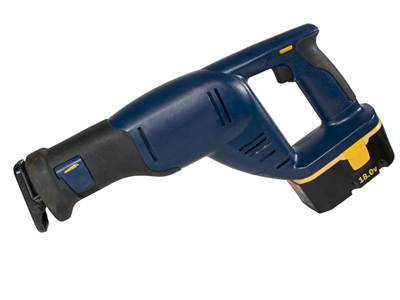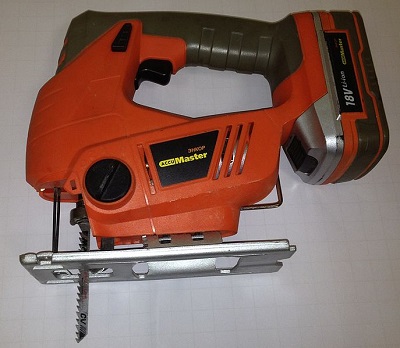You may have noticed that the terms saber saw and jigsaw have been interchangeably used these days. Even though various tool manufacturers have introduced their saws with both names, there has been no recognized difference between the two. As a result, others think that they are the same tool. However, when we look at the origins of these two tools, we see a difference.
In this article, let us take a closer look at the differences between saber saw vs jigsaw. Knowing the difference between the two will help you choose the best tool that will help you accomplish your project effectively.
Saber Saw – What is It?

A saber saw is another name for the reciprocating saw. This type of saw features a motor in moving the blade up and down, giving it the ‘reciprocating’ name. In terms of size, a saber saw is bigger than a jigsaw. It uses a toothed blade in making cuts.
This type of saw is used in projects that need brute force to complete the job. As such, they are preferred by contractors for tasks that require inaccurate, quick cuts, such as those in demolition projects. A saber saw does not need a table just like what is needed by a jigsaw, since the design makes it possible to be used while the user’s shoe is pressed on the material. Some models may even be used single-handedly, and also comes in both corded or cordless models.
Features
#1 Motor
The motor of a saber saw works in channeling the energy from either an electrical socket or a battery through the saw to allow a cutting movement.
#2 Shoe
The shoe is used in placing against the material that you are working on. Saber saws are not designed as a tabletop tool, which is why this design is ideal.
#3 Stroke and Blade Length
This is used in cutting through materials. The stroke length refers to the distance needed by the blade to travel in a single stroke.
Jigsaw – What is It?

A jigsaw is a tool that offers extreme versatility. For this reason, this is considered as one of the basic tools that can be found in a woodworker’s toolbox, whether it is for a DIY project or professional use. This type of saw is available in both corded and cordless form, depending on your preference.
A jigsaw is easy to use, which is why beginners choose a jigsaw over a saber saw. They are also compact, even for the corded varieties. Jigsaws can create intricate cuts. As suggested by its name, one of this saw’s earliest use is cutting jigsaw puzzles. Just like the saber saw, a jigsaw works in the same reciprocating movement, with the blade repeatedly moving back and forth to cut material.
Features
#1 Motor
Just like all other types of power tools, the motor is the heart of a jigsaw. It channels energy from an outlet, or battery (for cordless models), distributing it to the blade, generating power to create the cut. The motors of a jigsaw come in both brushed and brushless varieties.
#2 Blade
Without the blade of a jigsaw, it is impossible to cut. The performance of a blade is relative to its purpose of use. The teeth per inch (TPI) on the blades will also vary, depending on the use. The blades can be specifically designed for cutting wood, plastic, metal, and other specific uses. Still, these blades may be more expensive than multi-purpose or generic blades.
#3 Stroke Length
The stroke length is the distance in which the blade moves up and down in a single stroke. The higher the stroke rate is, the more distance can be covered.
#4 Shoe
The shoe is the plate that protects the blade. It can be used for leveraging against the cutting metal. The shoes may be adjusted, which can prove to be a valuable addition as you cut tricky materials, or for executing angled cuts.
Conclusion
Choosing between saber saw vs jigsaw ultimately boils down to your purpose of use. If you are looking for a saw that can cut through materials without prioritizing accuracy, and with a goal of creating rough cuts, a saber saw is enough to do the job for you. On the other hand, if you want a tool that will help you with more uses, preferring a tabletop design as you cut, a jigsaw may be the best option for you.
A jigsaw will help you in producing a wide variety of cuts at a relatively slower pace. As such, your decision boils down to your actual needs. If you have thoughts to share about the use and purpose of these two tools, feel free to leave them in the comments section below. You may also share this article if you like!

Leave a Reply